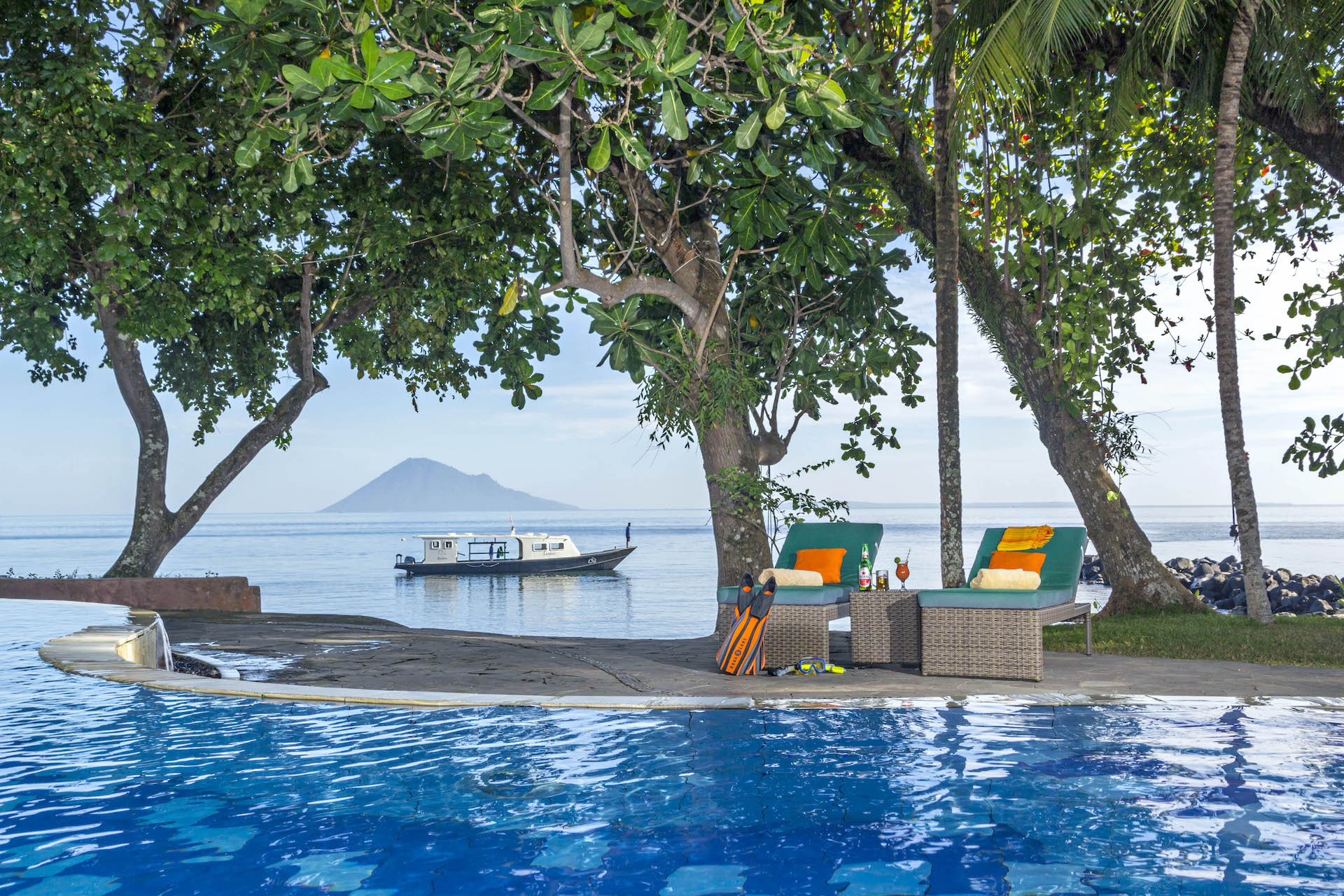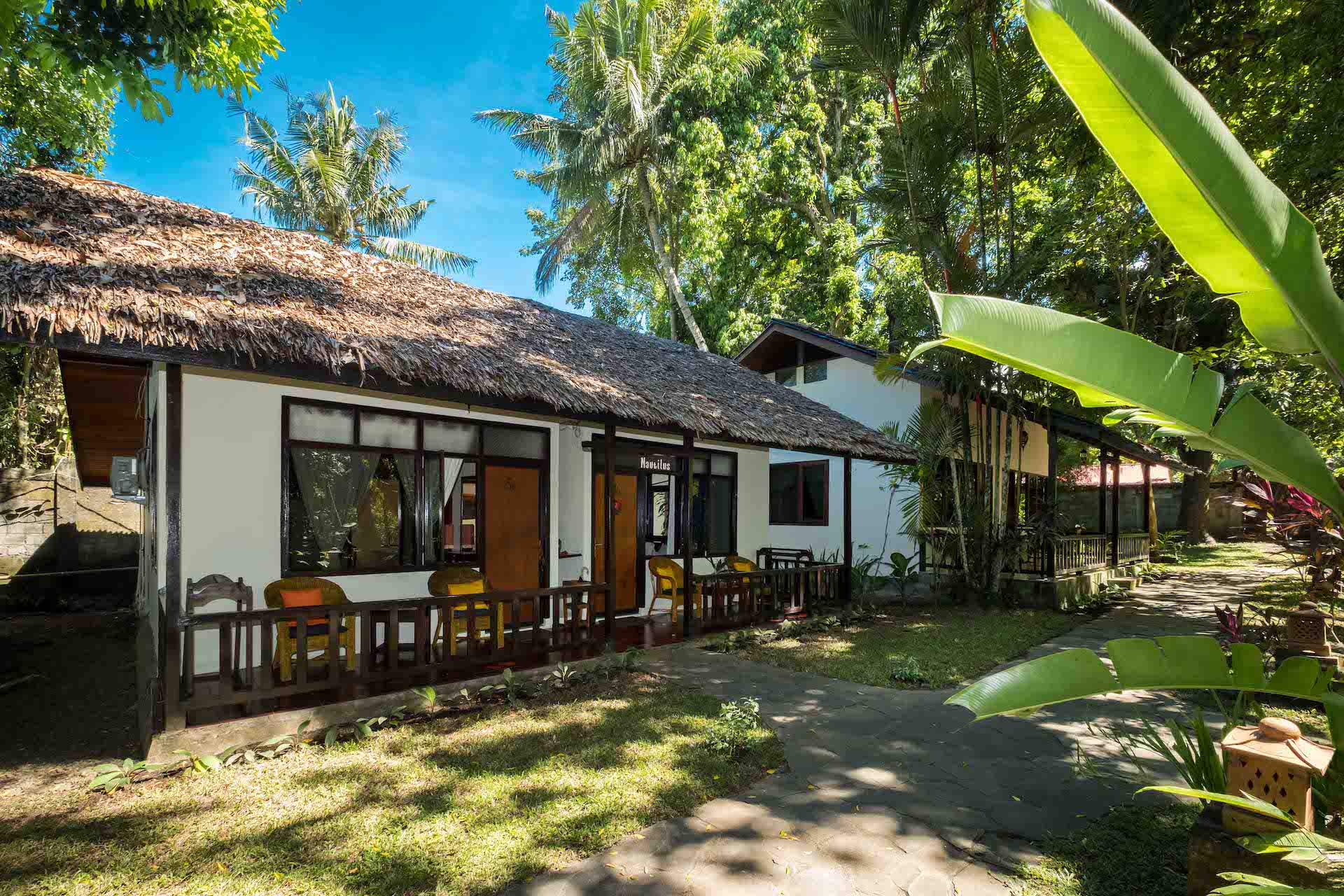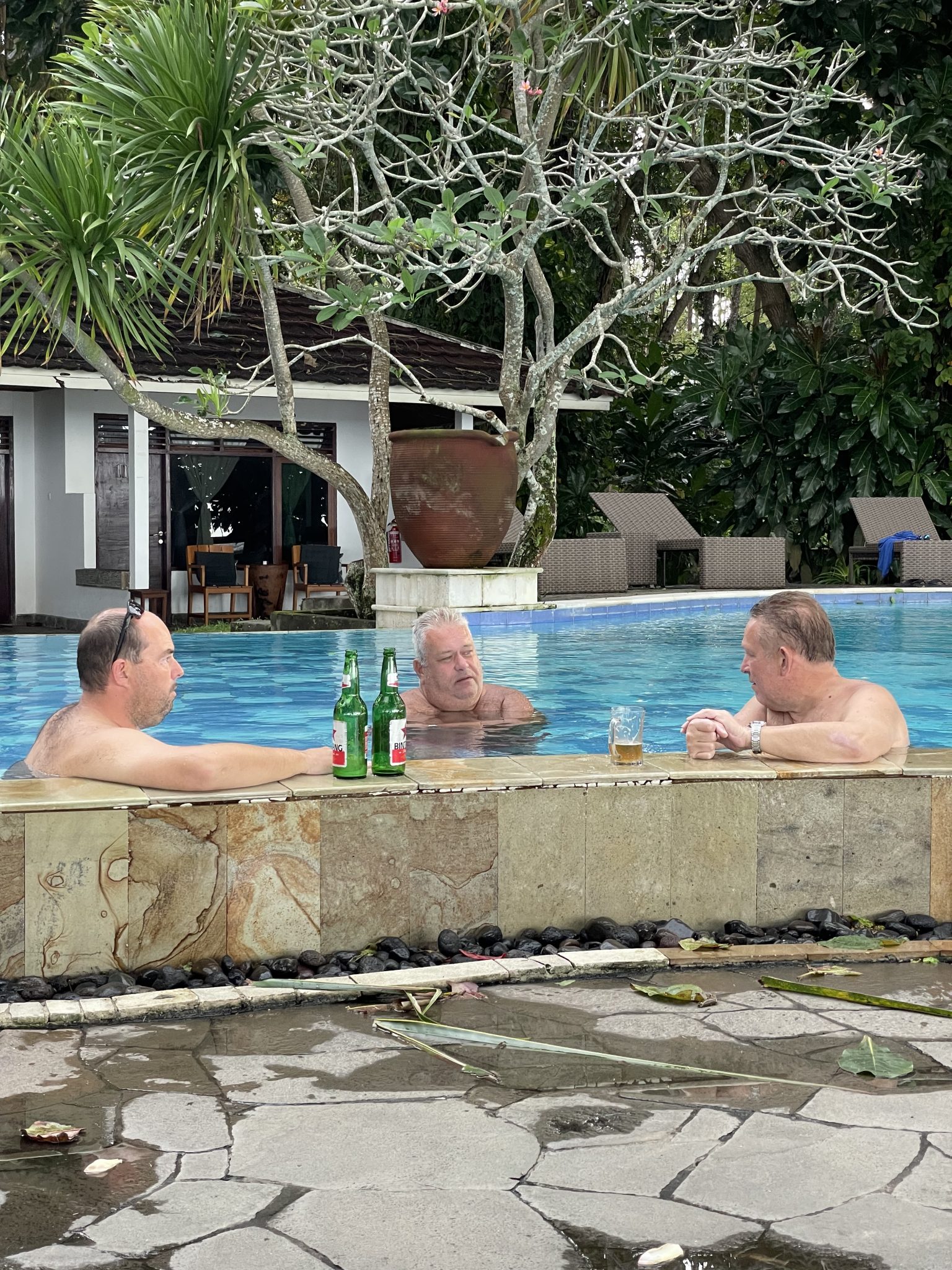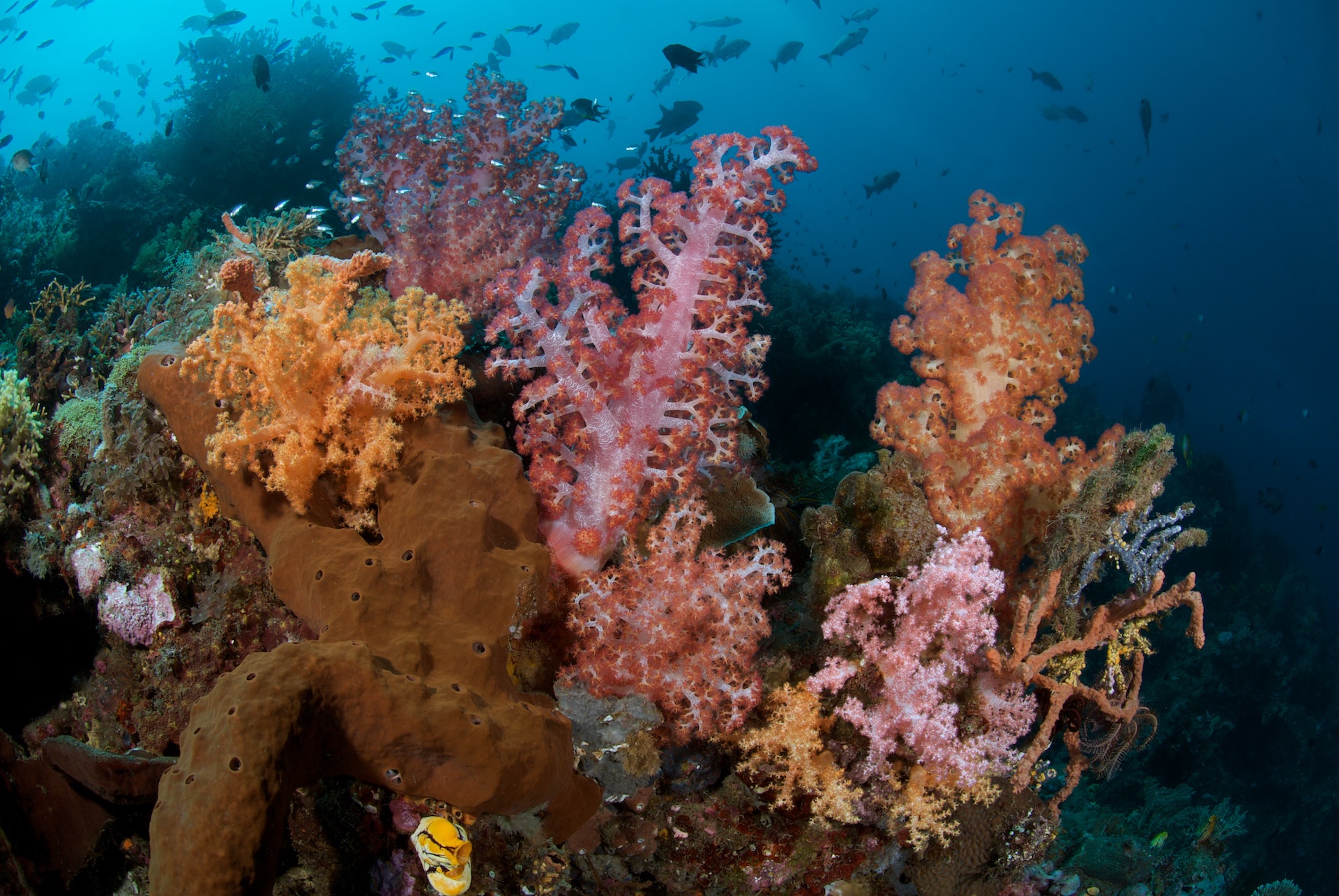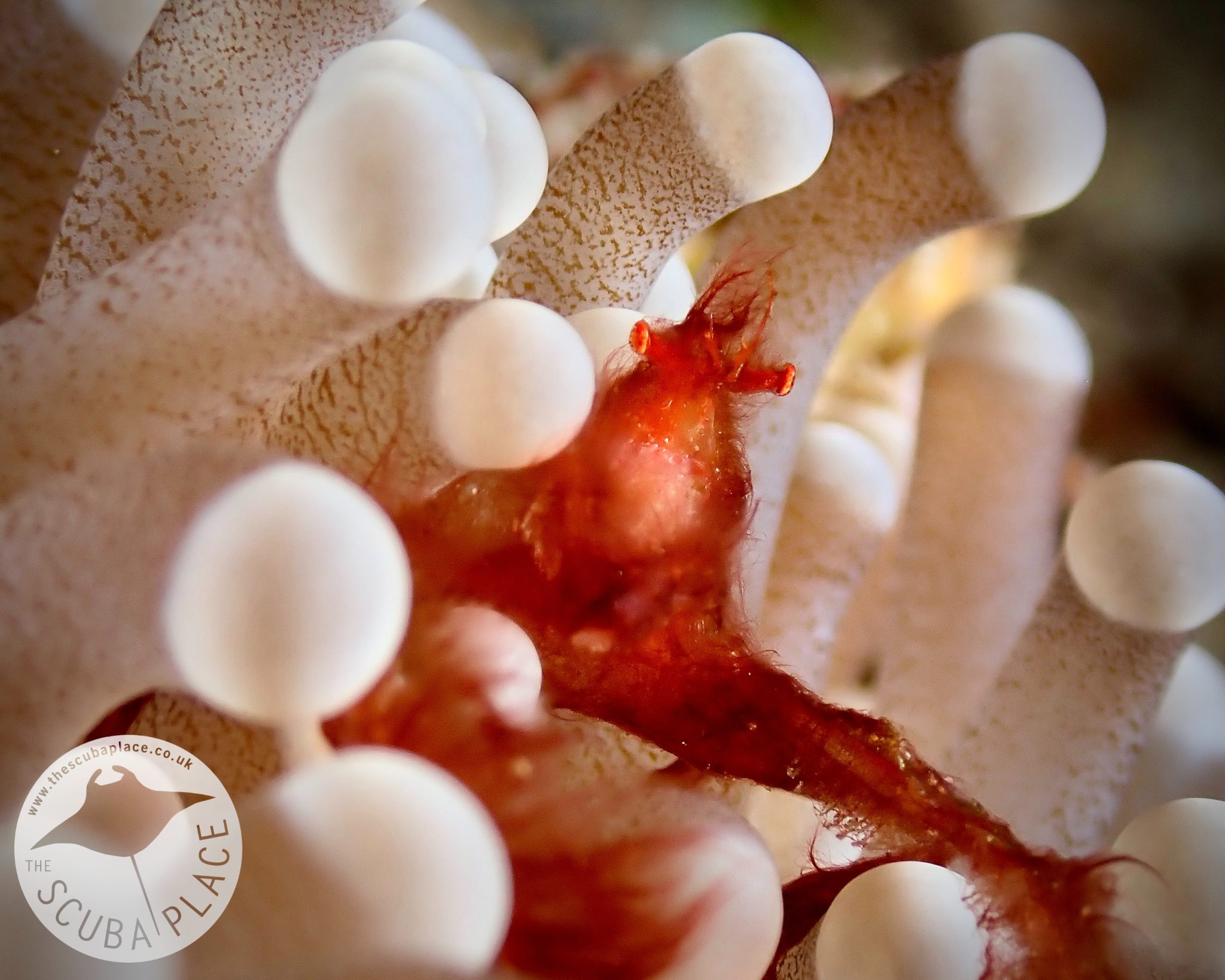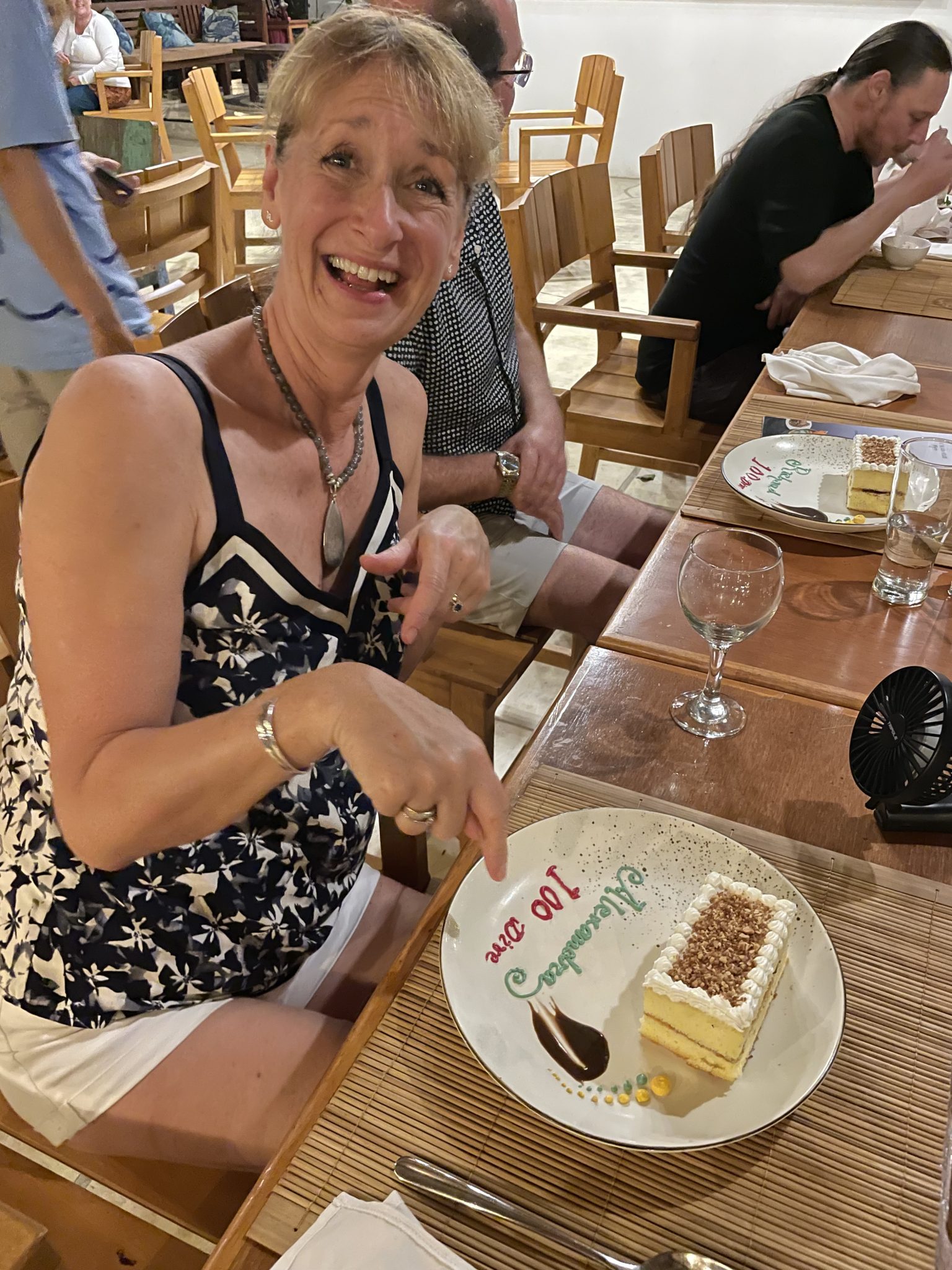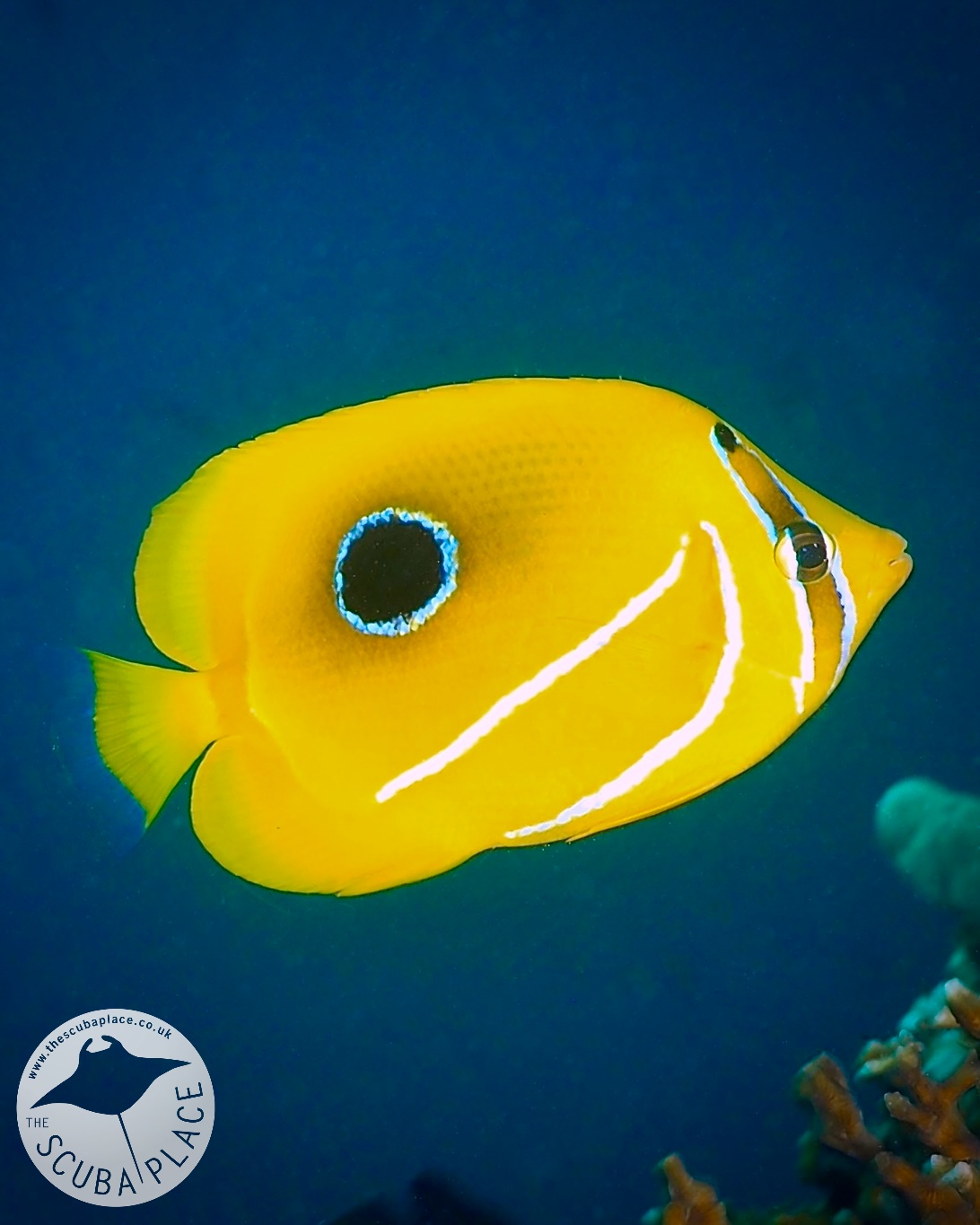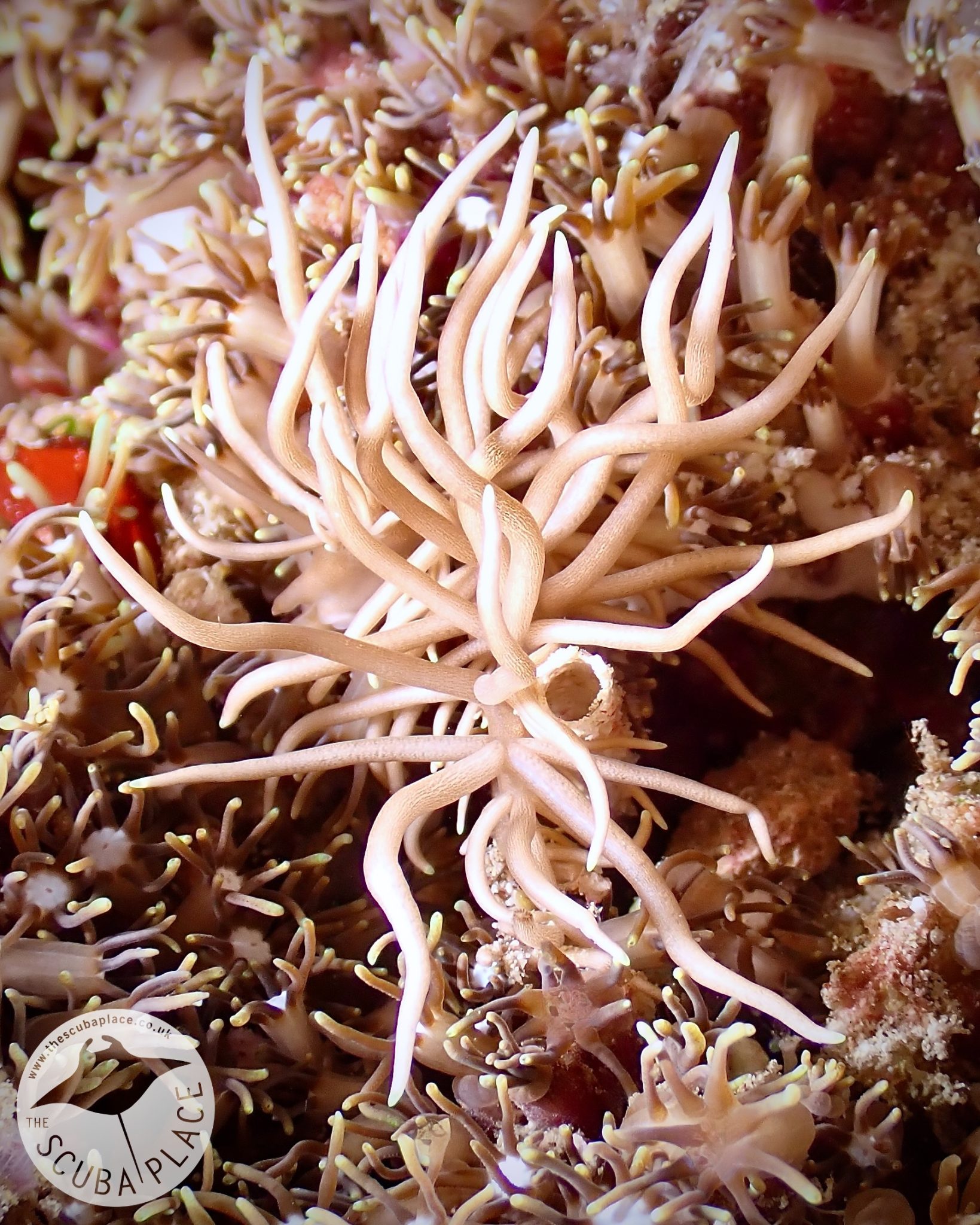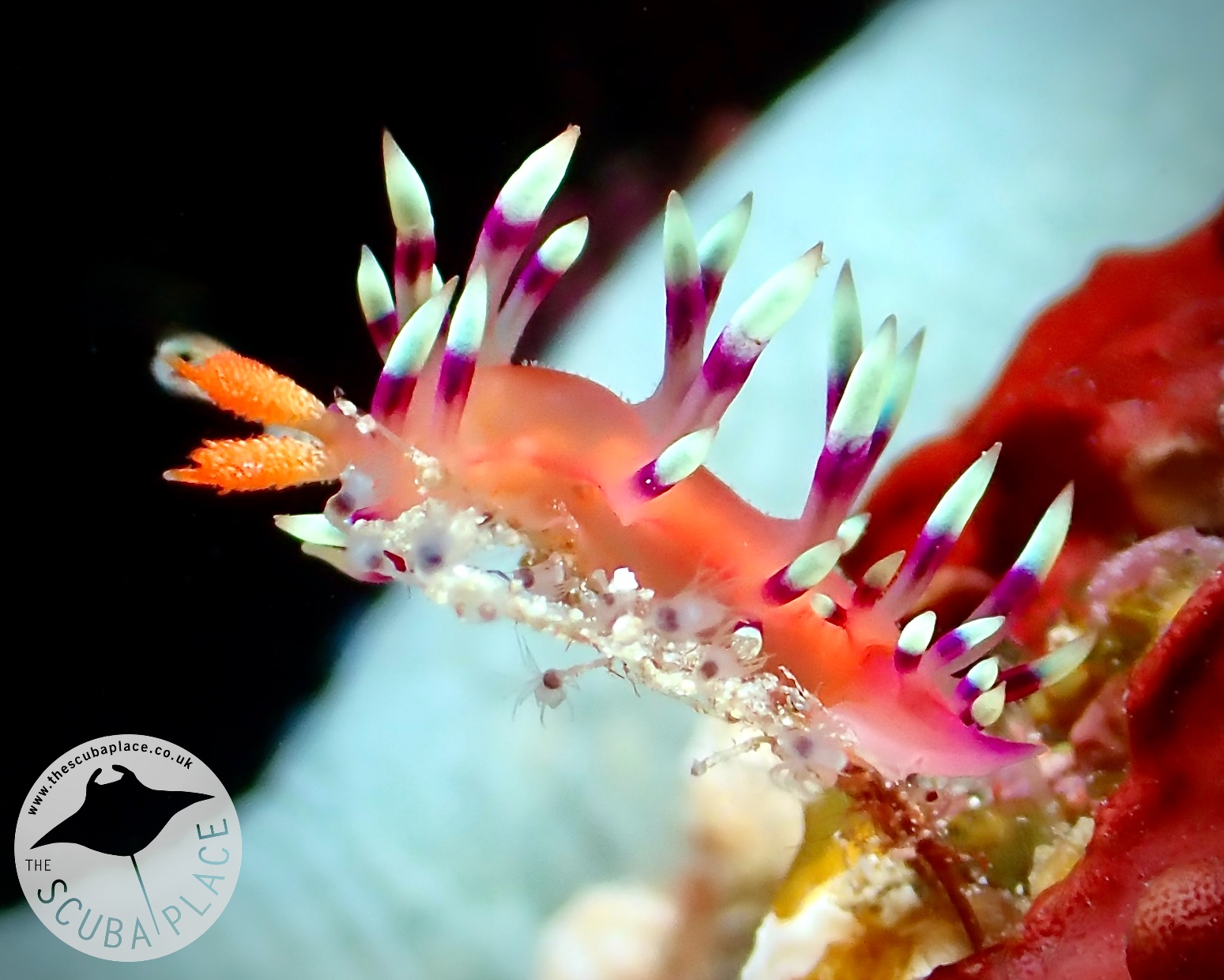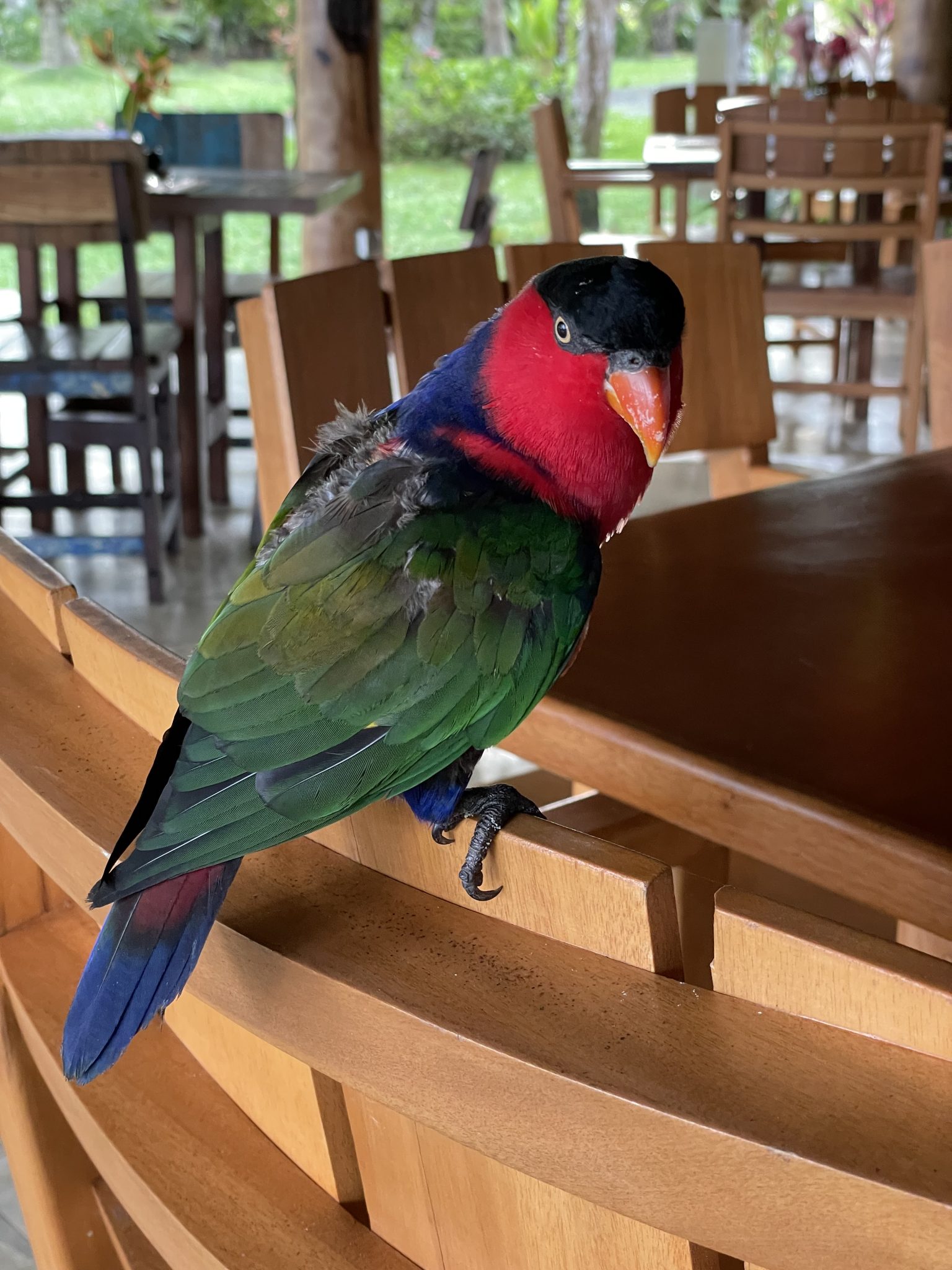Blogs
Dive Indonesia : Murex Manado Trip Report
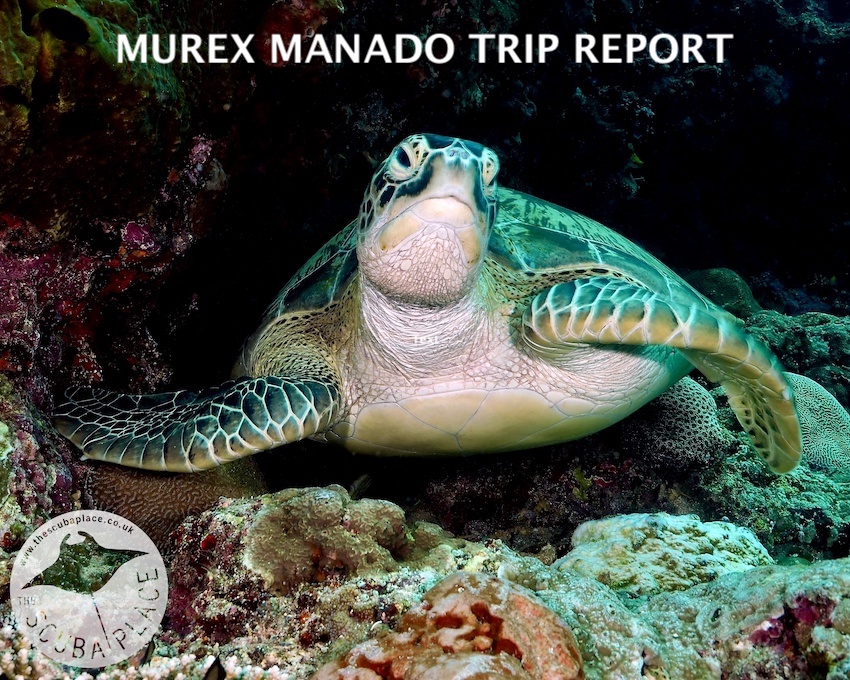
The Scuba Place spent January 2023 exploring four different resorts in Indonesia hosting a group of divers. This is Part Three of their four part Trip Report on Murex Manado. Read Part One on Lembeh Resort here and Part Two on Murex Bangka here.
All good things come in three’s right?
Well, with the Passport to Paradise itinerary, and the extremely well-thought-out and excellently executed travel programme, we have to agree!
Moving on from Murex Bangka to Murex Manado was the same format as from Lembeh to Bangka… bags outside the room before breakfast, a yummy breakfast, board the dive boat, and off we go – 2 dives on the way with surface interval snacks and drinks in between, and then, as if by magic (gratuitous Mr Ben segue) we arrived at Murex Manado.
We arrived by dive boat at the new marina and jumped into the vans for a quick 15-minute transfer to the resort. When we arrived, our bags had already been delivered to our rooms and our selected welcome drink was delivered. A much-needed shower was followed by welcome cocktails and snacks in the restaurant, an open-sided building right in the centre of the resort. More cocktails followed, and then more, and then dinner, and then sleep.
Murex Manado is the most developed of the three resorts on the itinerary – perhaps because it is on the mainland, but it is still a very intimate and relaxed place to stay. Set in beautiful tropical water gardens right on the seafront, with stunning views across the bay to Bunaken and the marine park, there are only 11 rooms, each sleeping two adults comfortably in big double or twin beds. Each room is air-conditioned, with an open-air bathroom and a patio with day bed seating. Nine of the rooms overlook the beautiful gardens, and two are set right by the pool.
On our first morning, after a pre-ordered cooked breakfast which some people didn’t remember ordering the night before, off we set for our morning of diving in the Bunaken Marine Park. We had amazing muck diving in Lembeh, followed by reefs and muck in Bangka so we were craving some ‘big stuff’, and Boy Oh Boy – did Bunaken deliver!
Established in 1991 by the Indonesian Government, the marine park is an incredible success, and it is not only turtles that gather – dolphins are seen almost every day from the dive boats, dugongs frequent the shallow and sheltered areas for the sea grasses that grow so well here, and whales pass through the straits on a regular basis.
Giant clams are found here – and not just your average giant clam – but 7 of the 8 species in the world are found in these waters, together with over 30 species of butterfly fish, and amazingly, 70% of all the fish species that are in the Indo-Western Pacific can be found here in Bunaken.
It really is a phenomenal place to dive – big drifts or a gentle bimble are easy to find, and there is so much to see – huge sponges, walls just smothered with corals and colours, green turtles EVERYWHERE – and for the fan of all things small and crittery (made up word but I really like it), the sponges and corals are full of crabs, shrimps and little beasties, making these walls dives great for macro photographers too.
Lunch back at the resort after a morning of diving, as it was time for a well-earned meal. Salads, fruits, Indonesian curries and other specialities, together with burgers, pizza, fish of the day and the like are all on offer, and always a dessert too!
So, that is the first half of the day taken care of………what to do in the afternoons?
Well – a snooze is always a favourite for me, but there is the option to go back and dive Bunaken even more, or stroll into the waters of Manado Bay from the beach – you will find a dark sandy sea bed and plenty of tiny things – this is critter diving right on your doorstep! Or the dive boats will take you to local reefs or even go out looking for dolphins or dugong.
The pool is also lovely – right on the water’s edge, with sunbeds and bar service – if you need to off-gas a little then this is the perfect place – and the wifi works well here too, so catching up on the real world can be done if you possess masochistic tendencies.
Then dinner. Then sleep. Then repeat – it really is that simple.
So, in a nutshell, this is a top-notch dive destination with insanely good diving! A super relaxed and small resort, with great food (and cocktails) and seriously impressive dive guides too. What more could anyone want?
We will be back – and probably far more than once. This ‘Passport to Paradise’ itinerary is genius and gives a brilliant blend of diving across the three unique destinations. Lembeh is undoubtedly the very best for critters and all things that live in the muck. Bangka gives a lovely blend of pretty reefs and critters on the sandy seabed. And Manado gives us Bunaken – phenomenal reef and wall diving – some of the very best we have done – and then the chance to see whales, dolphins and much more.
So, which was our favourite?
We are always asked ‘Where is the best place to go?’ or derivatives of such, and the answer is always incredibly hard. A single dive can make a whole trip in some instances, but pound for pound, Indonesia is now my personal favourite place to go.
I loved Lembeh – it is more upmarket, offers gourmet food, and has mind-blowing macro diving. As a newbie to a macro lens, I had a blast here. Bangka was awesome – a wonderfully chilled and relaxing destination – powder-soft sand, beachfront rooms, lovely people and really nice diving.
But for me, all things considered, Murex Manado took the title of ‘Best of the Three’ for this trip. The diving offered everything – from macro to mega-fauna, and all in a super-bright colourful and healthy marine environment – it is very much a destination in itself, and I would go back here time and time again, and maybe add on a little extension to Lembeh at the same time! Indonesia itself is stunning – beautiful scenery, and beautiful people, and we personally love the food too.
The Government have got some things very right – the marine park for example, but we have to tip our hats to and shout out about Murex – they are totally committed to the environment, both above and below the waves. They clean their beaches, clean their reefs, educate the locals through structured programmes, recycle everything they can and waste as little as possible, use solar power, and you won’t find a plastic straw or bottle in any of their resorts.
If you are thinking of where to go next, then the ‘Passport to Paradise’ itinerary gives you a brilliant insight into diving in Indonesia and what it has to offer – but take heed of our warning – you will want to go back as soon as you get home.
Our sincere thanks go out to all the staff at Murex Manado, Murex Bankga and Lembeh Resort for making this trip happen – you really did make a huge impact on us and our group, and we promise we will be coming back!
Key Facts :
- Getting there : Flights with Emirates Airlines to Manado depart from any major UK airport via Dubai and Jakarta or Singapore Airlines via Singapore and Jakarta. On Emirates from London Heathrow it was a 7-hour flight with a quick two-hour layover in Dubai followed by an 8-hour flight to Jakarta. We had a longer layover in Jakarta so we booked a room at FM7 Hotel, a quick 20 minutes from the airport for a much-needed shower and a kip. The comfortable double room was £36 and offers a free shuttle to and from the airport. Our final flight on domestic carrier Garuda to Manado was 3 ½ hours. 30 to 35kg baggage allowance is typical.
- Air temperature : Tropical – average daily temperature throughout the year is 28-30°C, with the humidity at 85-90%. The rainy season is considered to be November to May with peak rainfall in January.
- Water temperature : 26-29°C. A 1-3mm full suit or shorty will suit most.
- Visa requirement : Tourist visa is purchased on arrival for £30 or IDR 500,000.
- Health protocols : When we travelled, visitors were mandated to download an app “Pedulilindungi”. This required us to upload our proof of COVID vaccination and booster and approval was received within 24 hours. Upon arrival, we provided a QR code generated by the app, had our temperature taken and then we were off.
- Currency : Indonesian rupiah, US dollars or Euros on resort. We often find the exchange rate is better at the destination country. ATMs and exchange desks are available at the airport. The resort also accepted credit cards to settle our bill quoted in rupiah.
- Electricity : 230V with European style (round pin) two-prong plugs. Our adaptor worked without issue, and the camera room had extension leads with UK plugs.
- Internet and Wi-Fi : Wi-fi is available at no charge at the resort. The best signal around the resort was at the restaurant.
Price Guide: Expect from £1999 per person based on two sharing a beachfront room for a 7-night itinerary with full board and 10 dives. Return flights and transfers are included.
Our Advice: With a long travel time consider the Passport to Paradise itinerary to take in Lembeh, Bangka and Bunaken. We travelled to Lembeh Resort, Murex Bangka and Murex Manado Resort. Check out our trip report on Lembeh and Murex Bangka!! With numerous routes from the UK to choose from, any duration can easily be arranged.
Additional costs:
- Tourist Visa : £30 purchased on arrival.
- Food & Drink : Speciality drinks, adult beverages, sodas and snacks at Manado Resort. Fancy coffees, milkshakes, sodas, beers, wine, and cocktails were always available and affordable.
- Diving Extras : Three boat dives are offered daily along with the option to sign up for additional dives. We purchased a 2 dives/day package for our trip. NITROX was an extra charge and was paid for at the end of the trip.
- Tips : We would suggest a minimum of £15 per day to cover the dive centre and resort staff. Individual tips for special service are up to you!
Things to Pack :
- Dry bag : A small dry bag for daily boat dives is always handy to keep your personal items together and protected.
- Bug spray : When the sun went down, the mozzies came out!
- Medicated or drying ear drops : On a long trip with lots of diving, our ears tend to get a little sensitive so we try to be prepared.
Rechargeable personal fan : Found on Amazon these have become a traveller favourite! Handy on the plane.
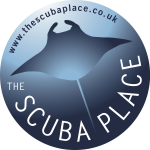 The Scuba Place designs and builds custom scuba diving holidays. With personal knowledge and experience diving in many of our destinations, there is no one better to help build your dream dive holiday. Come Dive with Us!
The Scuba Place designs and builds custom scuba diving holidays. With personal knowledge and experience diving in many of our destinations, there is no one better to help build your dream dive holiday. Come Dive with Us!
Call us at 020 3515 9955 or email at reservations@thescubaplace.co.uk
Find us on
Facebook : https://www.facebook.com/thescubaplace
Instagram : https://www.instagram.com/the.scuba.place/
YouTube : https://www.youtube.com/channel/UCH684OdioYirI-zzdT58Ceg
Blogs
Alonissos: The complete diving destination (Part 1)

In June we were incredibly fortunate to be invited to dive in Alonissos, a small Greek Island in the Sporades island chain located in the North Aegean Sea. While I have long been a big fan of the Greek Islands as a great holiday destination, I had not had the opportunity to do any diving on previous visits and Mike and I were extremely excited to see what Alonissos had to offer both above and below the surface!

The Sporades are easily accessible via the airport in Skiathos (the first island in the chain), which is served by Jet2 flights from all major UK airports from May through October. Numerous ferries and charter boats make island hopping from Skiathos Town a breeze. After an hour boat ride, the picturesque port of Patitiri was a wonderful introduction to Alonissos, where we were met by our gracious hosts Kostas of Albedo Travel and Dias of Alonissos Triton Dive Center. Mike and I were delighted to be staying at the Paradise Hotel, aptly named for its stunning views over the sea and great location for walking to the waterfront.

Alonissos is beautifully situated in the National Marine Park of Alonissos and the Northern Sporades, the largest marine protected area in Europe. The surrounding seas offer fabulous marine life, including incredibly rare species such as the Mediterranean monk seal. They boast deep walls covered in gorgonians and sponges, stunning topography with caverns, swimthroughs and pinnacles, and the first accessible ancient shipwreck from 500BC!

In locations where historical sites have been reported, the waters are largely restricted, but with collaboration between government, underwater archeologists and dive centres, incredible underwater museums are being created for a truly unique diving experience. Alonissos is home to the first of these, the Ancient Shipwreck of Peristera Accessible Underwater Archeological Site. The chance to dive into history (along with reports of healthy reef life and amazing underwater topography) meant Mike and I were keen to get in the water.

Our introduction to the diving around Alonissos was at the Agios Georgios Pinnacles, in the channel between Alonissos and Skopelos. This fantastic site was named “The Chimney,’ and proved to have a huge amount to see. We got to a decent depth here (over 25m), and marvelled at a colourful reef wall with a wonderful swim through whose rocky walls were absolutely covered with life. As well as brilliant topography there was no shortage of macro life here. We saw numerous nudibranchs, five different species in total. The second dive at Mourtias reef nearby was a shallower dive along a nice wall with lots of crevices. Several moray eels and grouper called this site home. We enjoyed looking in the crevices for lobster and smaller benthic life, such as cup corals and tunicates.

Our itinerary allowed us two dives a day with afternoons left to explore the island with our hire car and evenings to enjoy the famous Greek hospitality. This proved to be a lovely mix of in-water and land based diversions.

The next days diving to the Gorgonian Gardens and Triton’s Cave was to be even better! These two stunning sites are nothing short of fabulous. The Gorgonian Gardens was a deep wall near to the Agios Georgios islands. The ever-present currents in this deep channel meant that the sea life was amazing … the namesake Gorgonian sea fans dotted the wall at a depth of 30 to 50 meters, getting ever larger the deeper we went. Above 30m was by no means less beautiful, with sponges, corals, scorpionfish, moray eels and some rare and colourful nudibranchs.

The second shallower dive of the day was to Triton’s Cave or the Cavern of Skopelos, on the east side of that island. The spectacular rock formations had wild striations both above and below the water making a truly epic topography. The cavern entrance was at 14m, and big enough for a buddy pair, winding up to 6m and passing two beautiful windows out into the blue. Emerging from the cavern, the light at the shallower depths and the incredible rock formations made for a fantastic gentle swimming safety stop and we all surfaced by the boat with massive grins.

Check out our next blog :Alonissos: The complete diving destination (Part 2)” to hear about our amazing dive on the 2500 year old Peristera Wreck!
Thanks to:
Alonissos Triton Dive Center https://bestdivingingreece.com/
Albedo Travel https://alonissosholidays.com/activities/
Paradise Hotel https://paradise-hotel.gr/
Alonissos Municipality https://alonissos.gr/en/
Blogs
Mamma Mia! Diving Skopelos (Part 2)

Our second days dive itinerary was to the famous Christoforos wreck! This is arguably the best dive in Skopelos and though only open to divers with deep diving experience, this 83m long wreck is well worth the visit.
The Christoforos sits in 43 meters of water with the deck at 32 to 35 meters. A 30m dive can give an impressive view of the wreck, though such a large wreck needs a few dives to truly do it justice. Given its ideal location just a 2 minute boat ride from the dive centre dock it is an excellent first dive of the day. The sheltered site is also diveable in all but the absolute worst weather so although deep, the water is usually clear with little to no current making it a very pleasant dive. The site is superb for technical diving and a great training site for the Tec 40 and 45 programs, offered by Skopelos Dive Center.

The Christoforos wreck was originally a collier ship built in 1950 at Grangemouth shipyard under the name “Thomas Hardie”. In 1976 she joined the Greek merchant fleet as “Christoforos”. On the 2nd of October 1983 the Christoforos was carrying 2600 tonnes of cement from Volos to Piraeus Port. During the voyage the weather turned, resulting in the ship developing a 7 degree list, whereby she changed course for safe anchorage at Panormos, Skopelos. The ship reached Panormos at 16:00 with a list of 17 degrees and water ingress to No. 1 hull. Though attempts were made to right the vessel, the crew were ordered to abandon ship at 22:00. The captain, lieutenant and the quartermaster remained to try and save the ship, but had to abandon the attempt themselves and the Christoforos finally sank at 05:30 on 3rd October 1983. She now sits upright in 43 meters of water less than 200m from shore in Panormos.

Diving has only been allowed here since 2018, so the wreck is very well preserved and a real treat to dive. Permission to dive here was granted by the authorities after lots of incredibly hard work by the Skopelos Dive Center staff. Having a fantastic wreck in such an amazing location and in excellent condition is a real privilege.

Of all the sites in Skopelos this was the site Mike and I were most keen to experience. Having kitted up and zipped across the bay to the mooring, we left the surface and followed the descent line until the wreck emerged spectacularly from the blue at 15m. She is a big and beautiful wreck, sitting as though calmly continuing her journey along the seabed. With most of her original features still intact there were points of interest everywhere, including the anchors, winches, ships telegraphs, the wheel and RDF antenna.

We found that aquatic life had colonised the ship, with schools of fish, electric blue nudibranchs, a large moray eel and the resident scorpionfish lurking inside the bridge. The Christoforos was truly a stunning wreck and despite maximising our time at depth we eventually had to say our goodbyes and begin the slow and steady return to the surface.

After a superb morning dive we had the afternoon to do a little sightseeing of the island, with a trip to the church of Agios Ioannis Kastri made famous by the blockbuster movie “Mamma Mia!”. Mike and I spent a happy afternoon pootling around in our little hire car before meeting up with Lina from Skopelos Dive Center. An underwater archeologist as well as a dive professional, Lina had offered to show us a rather special attraction, the Christoforos shipwreck Digital Spot public information and awareness centre.

A fantastic initiative made possible from the collaboration of the government and hard work of the staff at Skopelos Dive Center is the “Digital Spot” in Agnontas port. This information center has a number of displays on the history of the Christoforos wreck, the process by which the wreck was allowed to be opened to the public for diving tourism, other sites of historical interest in the area, a video of the wreck and the best bit, a virtual reality dry dive experience! The beauty of the VR system is that non diving members of the family can see what you have seen on the wreck, or you can see areas that you may not have explored during the dive due to time or depth limitations. It was a truly immersive experience and a great addition to the dive itself.

After a wonderful day we celebrated our last evening on the island with an exquisite meal in Skopelos Town with fabulous views over the town and bay, washed down with the excellent local wine. The lamb with lemon and potatoes was a meal which I could happily eat every day for the rest of my life!

Skopelos is an island that truly has it all. The diving is excellent, the landscape is beautiful with plenty of non diving activities, the locals friendly and the food and drink superb. Given how accessible it is as a holiday destination it has avoided becoming overcrowded and even in peak season offers a fun yet relaxing atmosphere. We highly recommend giving Skopelos a visit. We will certainly be back again!
Thanks to:
Municipality of Skopelos (https://skopelos.com/)
Skopelos Dive Center (https://sporadesdiving.gr/)
Ionia Hotel (https://www.ioniahotel.gr/en)
Dolphin of Skopelos (https://dolphinofskopelos.com/)
Ta Kymata restaurant (@takymata)
The Muses restaurant (https://www.facebook.com/TheMussesMousses/)
Aktaiov resturant (https://skopelos.com/listings/aktaion-taverna/)
-

 Blogs2 months ago
Blogs2 months agoDiving With… Nico, Ocean Earth Travels, Indonesia
-

 News1 month ago
News1 month agoMurex Bangka Announce New Oceanfront Cottages & Beachfront Dining
-

 Blogs2 months ago
Blogs2 months agoA new idea in freediving from RAID
-

 Marine Life & Conservation1 month ago
Marine Life & Conservation1 month agoIceland issue millionaire whale hunter a licence to murder 128 vulnerable fin whales
-

 Marine Life & Conservation2 months ago
Marine Life & Conservation2 months agoThe Shark Trust Great Shark Snapshot is back
-

 News3 months ago
News3 months agoCharting New Waters; NovoScuba Goes Global with the Launch of their Revolutionary Dive Training Agency!
-

 Gear News1 month ago
Gear News1 month agoNew Suunto Ocean – a dive computer and GPS sports watch in one for adventures below and above the surface
-

 Marine Life & Conservation Blogs2 months ago
Marine Life & Conservation Blogs2 months agoBook Review: Plankton


